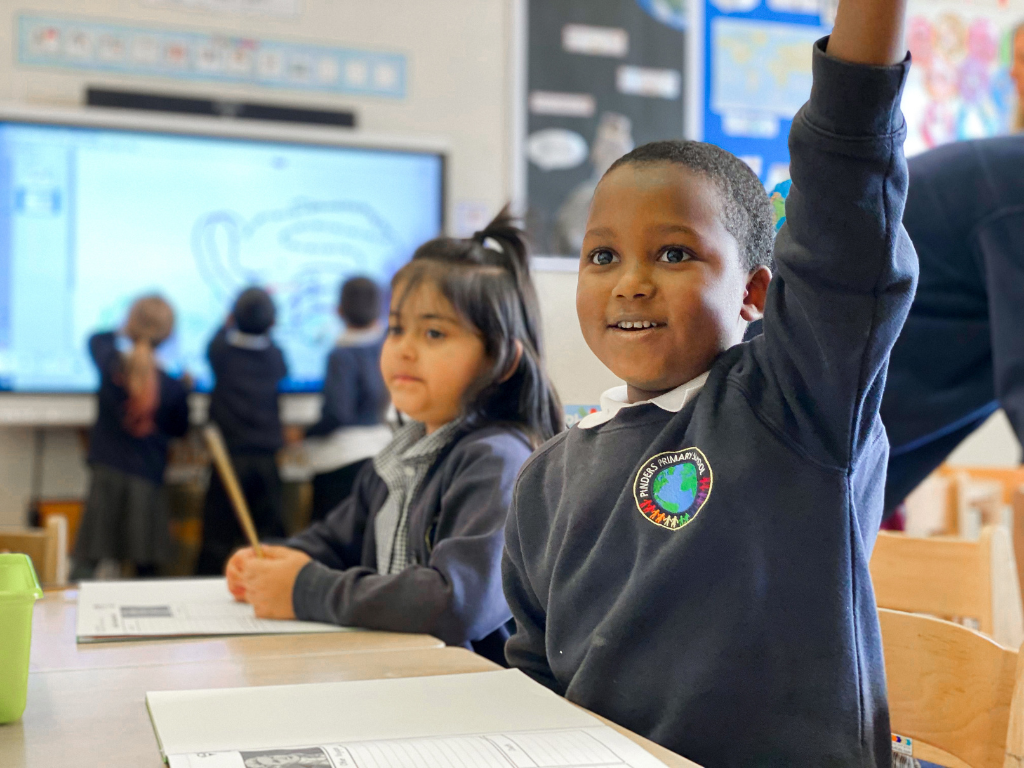With the pace of change in our world today, the coupling of everyday curriculum with key tactics that help students build social and emotional skills such as collaboration, communication, and resilience is more important than ever. During the pandemic, students had opportunities to develop some key skills while they had fewer chances to develop others. Ensuring that students have the right knowledge as well as the right balance of skills for success now and in the future may be complex but it’s achievable.
Both skill development and mental wellness are top of mind for educators everywhere. This is no surprise, as they deal with a number of challenges in the classroom: a bigger learning gap than before the pandemic, staffing shortages, and growing mental health concerns for students and teachers alike.
Educators are confident that supporting students with the right resources can help them address and overcome these challenges. More than half of educators (56%) in one survey said resources to support SEL are the most critical of all resource types when it comes to “getting students on track post-pandemic.” And eight in 10 (82%) survey respondents said they believed a fully integrated approach to SEL would have a significant, positive impact on achieving targeted student outcomes.
Nine in 10 parents surveyed by the Fordham Institute said they supported students acquiring key skills that SEL is designed to deliver:
- Setting goals and working toward achieving them (93%)
- Approaching challenges in a positive, optimistic way (91%)
- Believing in themselves and their abilities (91%)
- Navigating social situations (86%)
- Responding ethically (85%)
Below, we explain some of the key elements of SEL and how you can put it to work in your classroom — including some surprising ways you may already be using this teaching strategy.
What is social-emotional learning?
Have you had students exercise their critical thinking skills by writing a book report, researching a topic and debating it, or completing assignments related to a field trip? Then you’ve completed activities with your students that are often part of SEL teaching strategies. Although the definition and goals of SEL are generally agreed upon, there are several different frameworks for implementation. These frameworks vary in terms of how much emphasis they put on the different areas of SEL.
Harvard University’s EASEL Lab offers a tool to help the education community and others understand and compare more than three dozen SEL frameworks across six domains: cognitive, emotional, social, values, perspectives, and identities.
At SMART, we look at SEL as a set of learning experiences that helps students develop skills and attitudes that strengthen their sense of identity, create nurturing and empathetic relationships, and work toward their goals. SEL should be woven into the regular curriculum so that students learn how to engage with the people and situations that make up their environment while experiencing the world around them.
We think of social-emotional learning skills as falling into a few key buckets:
Self-efficacy and self-awareness
As students develop self-efficacy, they become more confident in their ability to reach a goal or outcome by improving their skills. This, in turn, helps them learn to persist through challenges and encourages them to learn from their successes and failures. Self-awareness is a related skill that helps students understand how their emotions and behaviors can affect others. Greater self-awareness helps students achieve greater self-efficacy.
Social-emotional awareness
Students build social-emotional awareness by learning how to establish and maintain relationships with others. This requires regular opportunities to engage with their peers, and allows students to hone a range of skills, including communication, collaboration, and active listening.
Identity and emotional awareness
Your identity is what makes you “you.” Discovering what makes them unique can help students broaden their worldview and build empathy for others. Emotional awareness goes hand-in-hand with identity when it comes to SEL. That’s because building emotional awareness can help students become better able to recognize their own emotions and those of others, which is a sign of emotional intelligence.
Social awareness and collaboration
Understanding how your thoughts and behaviors can impact others is social awareness at work. To build that level of awareness, students must learn to recognize the verbal and nonverbal cues others use to show their thoughts and feelings. Collaboration is a practice through which students can build social awareness. It’s also an area in which they can reap the benefits of greater social awareness by being able to foster strong and productive connections with others.
Critical thinking
Critical thinking happens when you reflect and reason with the result of challenging biases or thinking outside the box. As students develop this skill, they become more adept at discovering the links and distinctions between different ideas, concepts, and viewpoints. Becoming immersed in diverse frames of reference lets students practice considering divergent perspectives and explore the relative strengths of multiple angles of any concept or question.
Putting SEL to work
Now that we’ve outlined SEL, discover how to implement these learning experiences in your classroom. The first step is to determine which framework your school recommends using. To learn more about that framework, or if your school doesn’t have a framework in use, check out Harvard’s EASEL Lab tool, which explains the different models and how they approach SEL. The Collaborative for Academic, Social, and Emotional Learning (CASEL), which has its own framework, also makes several resources available to educators looking to implement SEL.
Other considerations for implementing SEL include the role of technology. Interactive devices like Chromebooks and tablets can give students new ways to collaborate. Educators can also use individual devices to connect students with a wide range of instructional materials, giving them voice and choice in how they engage with their learning. Technology can also help ensure all students feel comfortable participating in class activities. For example, a shy student may be reluctant to share their answer aloud but will type it into their individual device to share with the class on an interactive display during a group brainstorming or classroom conversation activity.
Here are a few activity ideas that can be easily implemented using SMART’s interactive digital tools to foster student engagement and build valuable social emotional skills. The idea is that you’re getting students to talk with each other and work together:
- Start each day with a check-in that allows students to develop personal connections with each other. Use the “Today I Feel … Chart” to start the discussion and let students drag and drop images to illustrate their emotions.
- Use the “Shout It Out!” activity to brainstorm as a class what goals are important for the day, week, or year. Then, create a collaborative workspace or launch a shared whiteboard and ask students to illustrate their goals by drawing or bringing in multimedia to express themselves. Share the completed Shout It Out with your students’ personal devices or save it online to revisit throughout the year as a reminder of the classroom’s shared objectives.
- Have small groups of students role-play difficult situations that they select using a Flip Out activity. Have the audience engage with the actors and discuss as a class how they might have felt and responded in real life.
For more examples of tech-enabled SEL activities, check out SMART’s Social and Emotional Learning Toolkit. Ready to learn more about how SMART’s interactive digital tools can help your classroom succeed with SEL? Click here.
“Stress, anxiety and trauma are all very real for students, and while teaching SEL skills does not actually prevent or treat mental health issues, it offers a buffer. The better your social and emotional skills are, the more adaptable you are to challenge and change.” – Kris Astle, education strategist, SMART Technologies.


